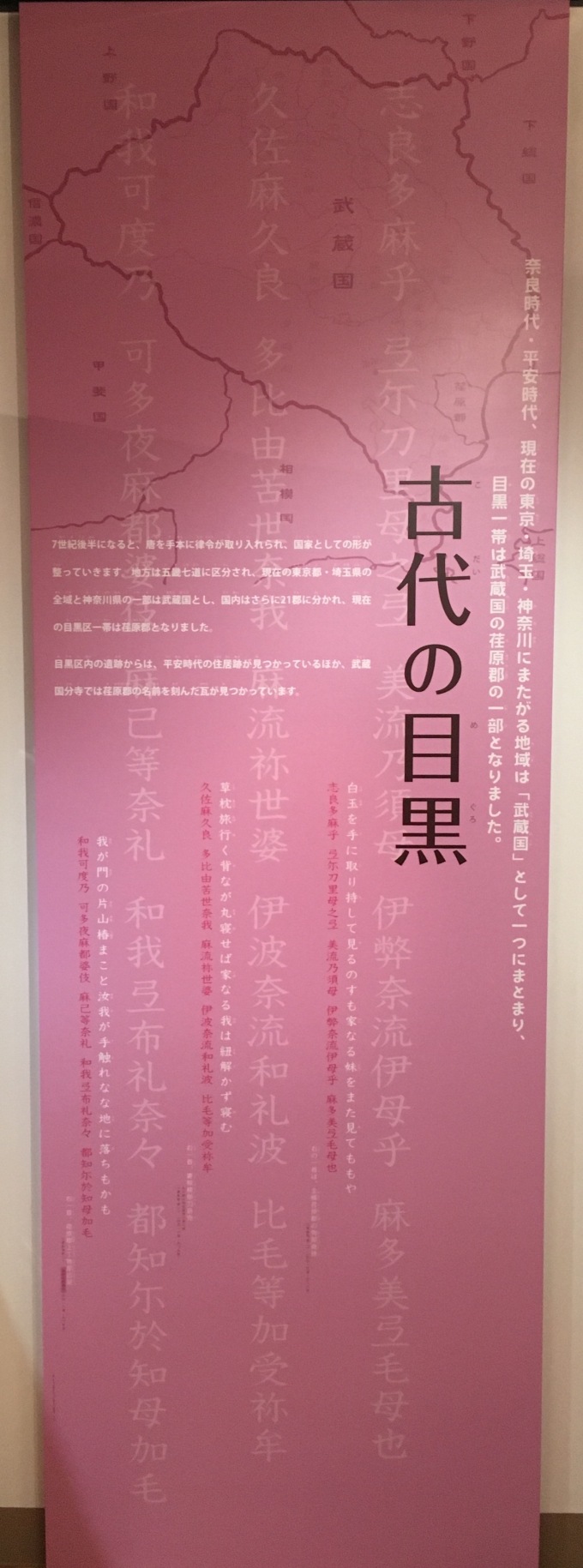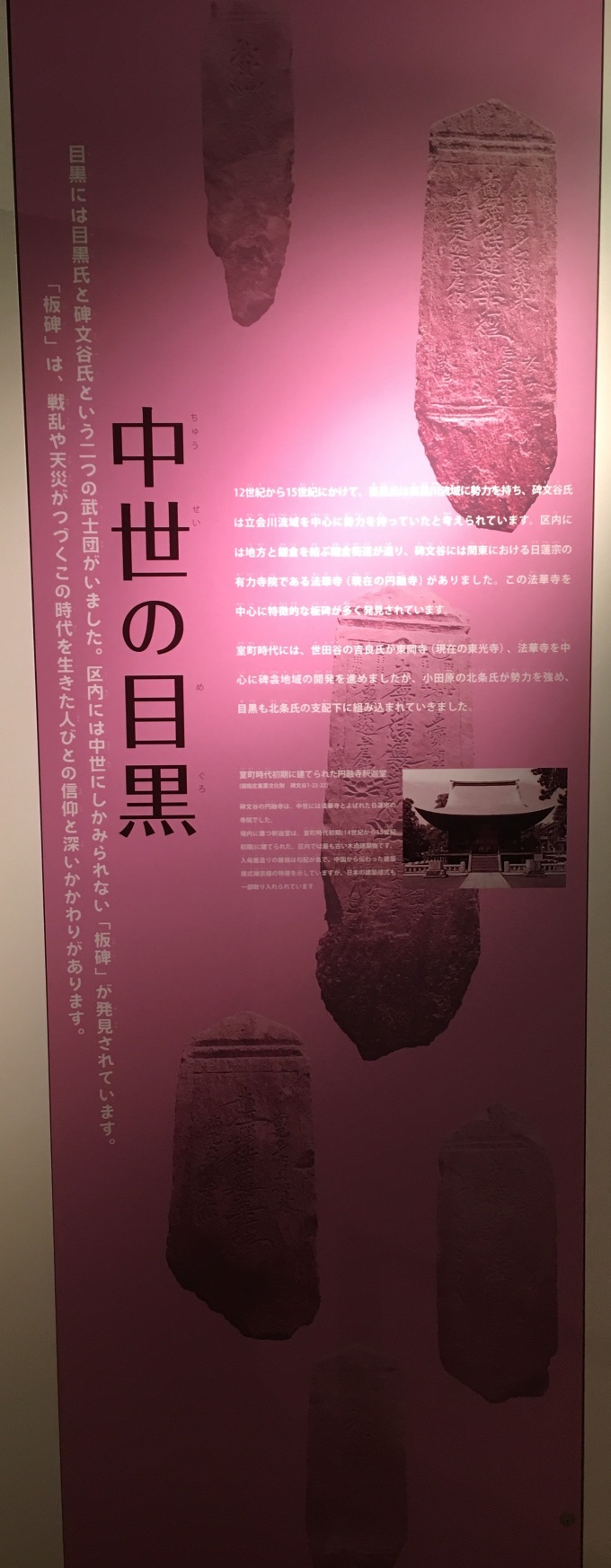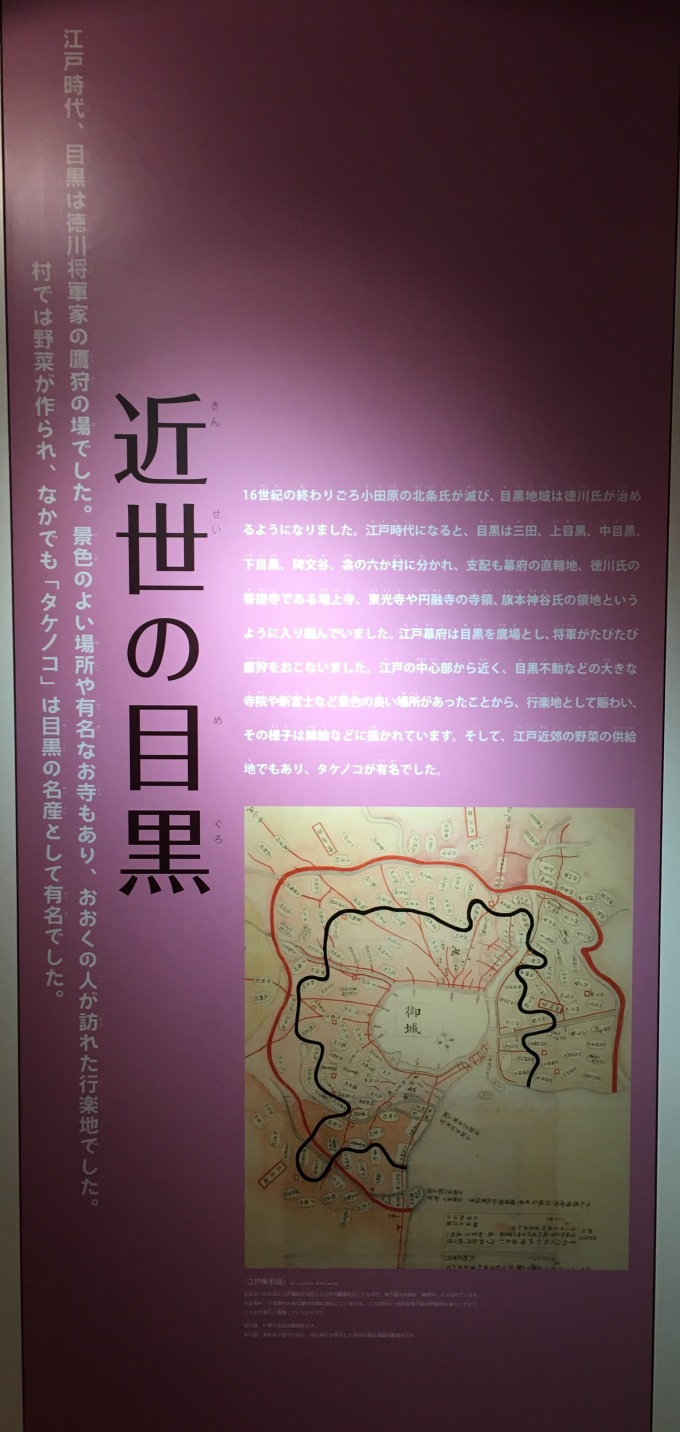Ancient Meguro

In the Nara Period (710–794 AD) and Heian Period (794–1185 AD), the area which covered what is now Tokyo, Saitama Prefecture, and Kanagawa Prefecture was called Musashi no Kuni (the Musashi Province), and the whole area of Meguro was a part of the Ebara County of the Musashi Province.
At the latter half of the 7th Century, the country took shape as legal codes modeled on the Tang Dynasty of China were adopted. The country was divided into five provinces and seven circuits. Present day Tokyo, Saitama Prefecture, and a portion of Kanagawa Prefecture became the Musashi Province, which consists of 21 subdivisions, and the entire area of present-day Meguro was included in Ebara County.
Medieval Meguro

In Meguro, there were two samurai clans by the names of Meguro and Himonya. Itabi, or Buddhist steles, which were seen only in the medieval period, have been excavated in Meguro-ku. Buddhist steles have a deep connection with the religion of the people who lived during this period of wars and natural disasters.
It is thought that from the 12th to the 15th Centuries, the Meguro Clan held sway in the Meguro River basin, and the Himonya Clan was centered in the Tachiaigawa River basin. The Kamakura Kaidō Road, which connected Kamakura with the provinces, ran through Meguro-ku, and the Hokke-ji Temple (presently Enyū-ji Temple), which was highly influential in the Nichiren Buddhist sect, was located in Himonya. A number of distinctive Buddhist steles have been discovered in and around Hokke-ji Temple.
In the Muromachi Period (1333–1573 AD), the Kira Clan from Setagaya proceeded with development centered around Tōkō-ji (presently Tōkō-ji [different Chinese characters]) and Hokke-ji, but as the Hojō Clan from Odawara increased its influence, Meguro fell under the control of the Hojō Clan.
Shaka-dō Hall at Enyū-ji built in the early Muromachi Period
National Important Cultural Property (1-22-22 Himonya)
Enyū-ji in Himonya was a Nichiren Sect temple called Hokke-ji in medieval times.
Shaka-dō Hall, built in the early Muromachi Period (between the Fourteenth Century and the early Fifteenth Century), is the oldest wooden structure in Meguro-ku. Its half-hipped roof has a steep pitch and exhibits characteristics of the traditional Zen-style architecture, which was introduced from China, but also incorporates some Japanese architectural styles.
Modern Meguro

During the Edo Period (1603–1868 AD), Meguro was a falcon hunting ground for the Tokugawa Shogun family. With scenic spots and famous temples, it was a recreation area visited by large numbers of people. The villagers cultivated vegetables, and bamboo shoots were famous as a Meguro specialty.
Toward the end of the 16th Century, the Hojō Clan from Odawara was destroyed, and the Meguro area came under control of the Tokugawa Clan. It was split into six villages: Mita, Kami Meguro, Naka Meguro, Shimo Meguro, Himonya, and Fusuma, The Tokugawa shogun used Meguro as a falcon hunting ground, and the shogun came hunting often. Because it was so close to the center of Edo (modern-day Tokyo), had large temples such as Meguro Fudō, and had places with beautiful views such as Shin Fuji, Meguro prospered as a recreation area, scenes of which are portrayed in colored woodblock prints, etc. In addition, it provided vegetables for Edo and was famous for bamboo shoots.